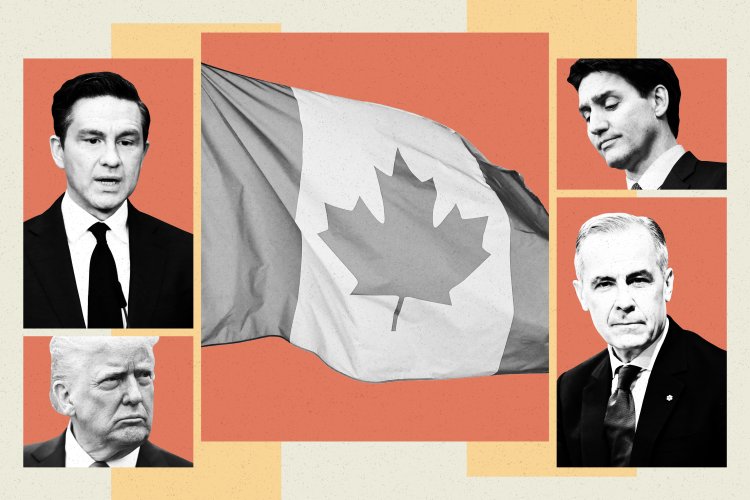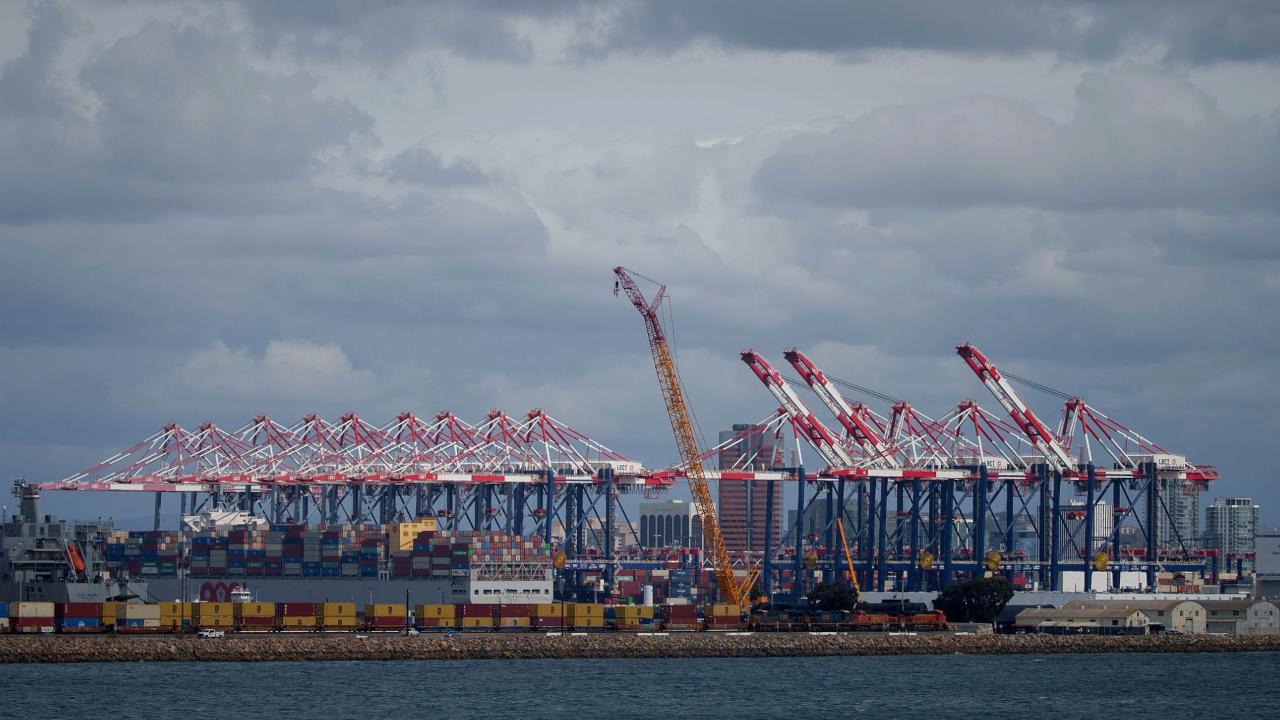'Election Day Approaches in Canada': 'Strange Data in the Polls'
PMG’s specialists in Canadian politics analyze a tumultuous election campaign.

Just months prior, Pierre Poilievre and Canada’s Conservatives enjoyed a significant 25-point lead. This changed dramatically due to the dual impact of President Donald Trump’s threats and the departure of former Prime Minister Justin Trudeau after a nine-year tenure.
Most analysts now anticipate that Mark Carney, who succeeded Trudeau as Liberal leader and prime minister in March, will secure a strong mandate to confront Trump. Carney, a political newcomer, has been promoting his extensive experience as the head of both the Bank of Canada and the Bank of England.
However, is there a possibility for an upset? What might the results look like in key regions?
To gain insights into what Election Day may bring, a PMG roundtable was held to share perspectives and predictions.
Participants included PMG’s Ottawa bureau chief Nick Taylor-Vaisey, Canada Playbook author Mickey Djuric, polling analyst Philippe J. Fournier, and PMG editors Calder McHugh and Catherine Kim, who reported from Canada throughout the campaign.
As results begin to come in, here’s what to know.
The 37-day snap election has revolved largely around one figure. Based on your observations and reporting on the ground, would you agree that the central ballot question is: “Who is best to stand up to Donald Trump?”
Djuric: The question still seems to be forming this late in the campaign, and will remain unclear until Election Day. The Liberals are framing it around Trump to capitalize on voter anxieties regarding U.S. relations. Meanwhile, the Conservatives are focused on cost-of-living issues and are avoiding Trump-related discussions. Younger Canadians are particularly drawn to Poilievre, with affordability and housing being foremost on their minds. In contrast, older Canadians appear more concerned about Trump. The election may hinge on which generational concerns dominate at the polls.
Fournier: There’s no doubt that public sentiment shifted dramatically. It wasn’t a straightforward connection of “Trump attacks Canada, hence it helps the Liberals.” Many Canadians were seeking change from the Trudeau administration while looking for a centrist alternative, which Carney seemed to represent. The Conservative messaging took time to adapt, and many voters were likely already decided when Carney called for the election. The polling average has remained largely stagnant since that moment.
Taylor-Vaisey: I concur with Mickey about this fluidity. Over the past five weeks, two ballot questions have competed for voter attention. Trump’s influence has been monumental, and his actions have led many people, who previously might not have followed market trends, to start monitoring economic indicators. Early in the campaign, discussions were dominated by Trump-related issues, but cost-of-living continues to resonate strongly, especially with younger voters. For some, these issues overlap.
Kim: Trump’s temporary reduction in attacks on Canada has likely allowed voters to focus more on domestic issues.
McHugh: To Philippe's point, prior to the election announcement, polls were shifting significantly toward the Liberals. The campaign itself has felt static. From speaking to voters, it’s clear that while affordability and housing are on people’s minds, Trump still casts a large shadow over the discourse. Although there may be reasons to believe Conservatives could have a better chance than polling indicates, it appears they have struggled to pivot their campaign focus effectively.
Taylor-Vaisey: Additionally, it's worth noting that 7.3 million Canadians have already voted in advance polls, and their ballot choices are largely set.
Nick, if this election is viewed as a referendum on whether Canada will embrace or resist populism, what insights will emerge for the global landscape?
Taylor-Vaisey: Before Justin Trudeau announced his exit, there was a prevailing belief that the election results were predetermined, with a disfavored prime minister facing a global trend favoring populist candidates on the right. However, those assumptions changed swiftly once Trudeau announced he would not seek re-election, and Carney assumed the role of prime minister. One takeaway for the rest of the world is that Donald Trump can radically alter the political landscape of a G7 country at will.
Trump holds significant influence over trade partners that lack alternative options. A secondary lesson is that reliance on the U.S. poses clear vulnerabilities, particularly in a Trump 2.0 era.
Philippe, many political analysts have noted the unprecedented nature of the Conservatives’ steep decline. What single word would encapsulate this campaign’s drastic shift?
Fournier: Initially astonishing, but in retrospect, it provides clear insight into the mindset of the average Canadian voter. Over the past two years, Poilievre has sustained a permanent campaign centered on attacks—against Trudeau, the Bloc Québécois, NDP leader Jagmeet Singh, and others. While his base thrived on this approach, broader appeal requires adding supporters, not alienating them. As a result, when it was time to broaden his coalition, he found few allies beyond his core supporters.
As for the historical 25-point lead? It will be a significant point of reference. No lead in polling can be considered secure.
This election was anticipated to be a likely “change election.” The Liberals, in power since 2015, are seeking a fourth mandate—a rarity in Canadian politics. What are Canadians opting for instead of this change?
Taylor-Vaisey: Carney is attempting the seemingly impossible feat of positioning himself as a change candidate. He has eliminated a controversial carbon tax and reversed unpopular capital gains tax rules from the Trudeau administration. Carney seeks to present himself as a stability candidate amid Trump-induced uncertainty, which resonates well with voters, aiming to convince both weary Liberal supporters and moderate Conservatives that he differs markedly from Trudeau. If successful, the Liberals could gain seats in surprising areas, such as conservative Calgary. Conservatives must be feeling immense pressure in this context.
Trudeau has remained largely out of sight during this campaign. Mickey, did your on-the-ground coverage reveal his lingering presence, or have Canadians moved on?
Djuric: When talking to Liberal supporters, Trudeau's name rarely comes up unless specifically prompted. Liberal candidates have stated that this election would be vastly different if Trudeau were still leading, as he would dominate discussions. They credit their positive polling to Carney's arrival, which has reinvigorated the party's base. Many voters expressed discontent with Trudeau’s perceived condescension but feel renewed support for the party under Carney’s leadership.
In contrast, Conservative supporters continue to invoke Trudeau during Poilievre rallies, struggling to understand why Canadians would back a fourth Liberal mandate, as they believe Carney’s policies align closely with Trudeau's.
Catherine, would you like to add anything?
Kim: In Brantford, a region with a long history of voting Conservative, I noticed that voters still voiced their frustrations regarding Trudeau while the name Carney was often absent. This indicates that Poilievre's messaging has resonated strongly in some Conservative communities.
Calder, you’ve spent time in Quebec, where 78 seats are contested. What dynamics are at play there? Philippe, feel free to add your insights from Montreal!
McHugh: Quebec has a robust separatist movement and the Bloc Québécois, which primarily runs candidates within the province. However, as Philippe noted, Carney is performing exceptionally well, gaining popularity among Quebecers. It appears that Blanchet, the BQ leader, has run a solid campaign, maintaining popularity as NDP support dwindles. Across the country, there is a remarkable sentiment that Quebecers are increasingly identifying as Canadians, a shift influenced by a nationalism spurred by Trump's rhetoric. This newfound sense of national unity has positioned Carney well for potential gains in Quebec, where the Liberals secured 33 seats in the last federal election.
Fournier: The electoral landscape in Quebec might see unexpected shifts. Traditional nationalist sentiments exist in suburban Montreal, but current polling suggests the Liberals are outperforming expectations among francophone voters province-wide, a trend not seen in years. Carney’s appeal in Quebec could significantly benefit the Liberals.
If Pierre Poilievre and the Conservatives were to achieve an unexpected win, what would that scenario entail?
Djuric: A Conservative victory pathway is complex. They would require progressive votes to shift to the New Democratic Party while also needing support for the Bloc Québécois in Quebec beyond current predictions. Minor parties typically siphon votes from the Liberals, allowing Conservatives to capitalize. However, this election has seen diminished support for those parties, which benefits the Liberals.
Traditionally, Conservatives dominate in the mid-west, but those regions lack the population density to yield significant seat numbers compared to Canada’s eastern provinces. For a Conservative win, they need to make gains in the greater Toronto area—often a Liberal stronghold—while also capturing seats in Quebec and the Atlantic provinces. They cannot afford to lose any incumbent seats.
Fournier: If the current polling holds until Sunday night, a Conservative win would send shockwaves through the Canadian polling industry, resulting in chaos.
Two-thirds of Canadians reside within 60 miles of the U.S. You’ve all observed the collateral damage in border communities due to Trump’s trade policies. Is there a belief among residents that the rift with the U.S. is permanent?
Fournier: It may not be permanent, but the damage is profound. Anecdotally, I know many who cancelled summer trips to the U.S. This situation might take years to mend.
Taylor-Vaisey: The rift might feel permanent, but that could change with time. These communities have deep ties to their American neighbors, many of whom continue to work across the border. The phrase “going over the river” reflects this connection. If Trump were to leave office today, I believe there would be a swift and welcoming change in sentiment—until the next leader comes along with grievances against Canada.
Djuric: In Stanstead, Quebec, bordering Derby Line, Vermont, the Canadian mayor is actively working to foster goodwill, reminding residents that Trump’s presidency is temporary. Interestingly, American residents are beginning to distance themselves from Trump, displaying Canadian flags to show solidarity.
McHugh: I’ve visited numerous border towns and noticed a shift in sentiment. Conversations revealed that people are being more cautious about crossing the border. On the American side, residents display both Canadian and American flags, while in Canada, American flags have largely disappeared, replaced with displays of Canadian pride. Yet, interpersonal relationships across the border remain strong, and in some cases, even more robust amid rising geopolitical tensions.
Kim: Rebuilding trust will be a lengthy and challenging process. The emotional toll of this rift is significant, given the long history between Canada and the U.S. and the tangible economic impacts of Trump’s policies. Nonetheless, I agree with Nick that a positive change in the vibe would be readily welcomed once it arrives. Many express anger toward Trump, but there’s a palpable sense of grief regarding their relationship with the U.S. and its citizens—a lament of sorts over a bond fractured by circumstance.
As we wrap up, does anyone wish to offer a prediction?
Taylor-Vaisey: Predicting the outcome is risky, but here’s a light-hearted one: The Maple Leafs might actually win a playoff series or two. Anything is possible, much like the sentiments within Conservative and New Democratic Party war rooms as they await their fates.
Djuric: Ultimately, it’s up to Canadians to determine the outcome. Regardless of the result, we’re likely to see multiple federal party leaders stepping down following this campaign. The election has not only focused on reviving Canada’s economy but also on the need for a reorganization of federal parties that may face dire prospects after Election Day.
Kim: Even though it's difficult to predict Trump's next move, I’ll speculate that he may stir the pot again shortly before the election by mentioning Canada in an interview or on social media.
McHugh: Canadians are generally cautious! However, I’ll make this prediction—though I won’t take full responsibility for it—the NDP may fall below the 12 seats needed for official party status in Parliament, leading to significant changes within Canadian politics and potentially impacting NDP leadership.
Fournier: Current numbers heavily favor the Liberals: a majority is within reach but not guaranteed. For the Conservatives to emerge with the most seats, polling would need to miss by historically unprecedented margins.
Aarav Patel for TROIB News












